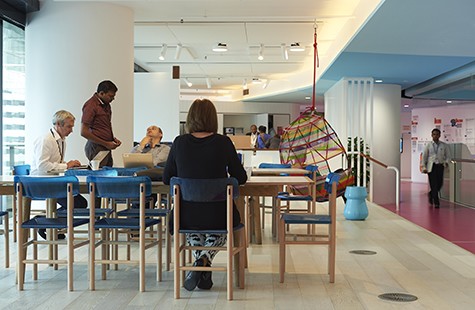Hassell and Arup have released new research which suggests rethinking the current building codes that impact how we arrange work spaces.
The two leading architecture and design practices teamed up to deliver the research project, 'Cracking the Capacity Code: Rethinking building occupancy in a new era of work'.
The researchers say exploring the issues which they identified could unlock new forms of value in workplaces.
“We’re experiencing denser office working environments and organisations that have adopted flexible working are potentially at risk of exceeding current building regulations and certifications,” said Dr Agustin Chevez, Senior Researcher at Hassell.
“The potential of contemporary offices could be increased by rethinking the way buildings are currently arranged.”
 Image: Hassell
Image: Hassell
The paper concludes it is a problem that the National Construction Code (NCC) of Australia’s definition of an office and its nominated density have not changed since first introduced in 1990.
“This is a problem because it fails to acknowledge the intervening changes in technology and work practices which, amongst other changes, have created denser environments. As such, contemporary office buildings, especially those that have adopted flexible working practices, are not only being limited in their potential, but are at a high risk of exceeding their design capacity,” it says.
“Our research suggests that efforts should not focus on nominating a higher density, but on developing a framework that better reflects the nature of occupancy in contemporary work environments."
The research has generated significant interest from property industry leaders including developers, builders, engineers, certifiers and tenants, Hassell report on their website.
“The strong interest in this initial research at the launch demonstrates the need to reconsider the current design standards and codes in Australia, rethinking the way capacity is understood and nominated,” they argue.
“The next steps of the research will be to convene further discussions, including a range of industry perspectives, to consider how these new patterns of occupancy could be reflected in building codes and regulations in the future.”
You can download the research report via Hassell here.

